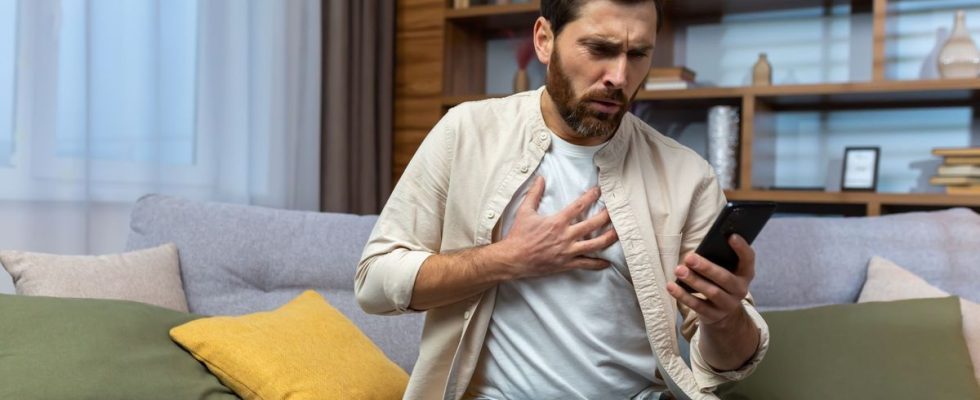Published on
Updated
Reading 3 mins.
in collaboration with
Dr Gérald Kierzek (Medical Director of Doctissimo)
Thanks to its camera, its microphone, its motion sensors… your smartphone could be the best tool to detect the first signs of a stroke. Researchers are convinced of this and present results that could change the management of strokes.
The prognosis of cerebrovascular accidents largely depends on the speed of treatment, and therefore on the detection of the first signs to alert the emergency services. To reduce this delay, American and Bulgarian researchers want to transform your smartphone into an “on-board doctor”.
Recognize the very first signs of a stroke
During the 20th annual meeting of the Society of NeuroInterventional Surgery, which takes place from July 31 to August 4 in San Diego, a team of American and Bulgarian scientists presented a study with the barbaric name “Smartphone-Enabled Machine Learning Algorithms for autonomous stroke detection”. But behind this title hides a simple idea: to detect ultra-early weak signs of stroke thanks to your smartphone.
In this work, they used data from 240 stroke patients hospitalized in four metropolitan stroke centers. Within 72 hours of the onset of the patients’ symptoms, the researchers used smartphones to record videos and test the strength in their arms. The objective: to identify all the classic signs of a stroke in these patients: facial asymmetry, weakness of the arm but also modified speech.
A reliable diagnosis in “almost all cases”
Result: the experts listed 68 landmarks on the face, in order to be able to assess the asymmetry of the face.
To test arm weakness, the team used data from a smartphone’s standard internal 3D accelerometer, a gyroscope, which is an angular position sensor, and a magnetometer, which can measure a field magnetic.
For the speech changes, the specialists used a voice recognition method, which translates sound waves into images.
They then tested the app using reports from neurologists and brain scan data, and found that the app was sensitive and specific enough to accurately diagnose stroke in almost all cases.
“Deploying this app will change lives”
For Dr. Radoslav Raychev, a vascular and interventional neurologist at UCLA’s David Geffen School of Medicine, “this app and emerging machine learning technology will help more patients identify stroke symptoms as soon as they arise. Quick and accurate assessment of symptoms is imperative to ensure that people who have had a stroke survive and regain their independence. We hope the deployment of this app will change lives and the field of stroke care.”
Strokes are the first cause of acquired physical disability in adults, the second cause of dementia (after Alzheimer’s disease) and the second cause of death.
The point of view of Dr Gérald Kierzek, emergency doctor and medical director of Doctissimo
“This is an interesting advance because usually, this type of application is more of a gadget. There, the 68 landmarks on the face and the various sensors allow a multiparametric collection of data that humans cannot compile. It will also be possible to detect a stroke with subclinical signs, because the application will be able to detect the slightest change in the symmetry of the face..
“Remember that if you are facing a person who has a stroke, the acronym to remember is FAST :
- Face, for paralysis affecting the face, sometimes just the mouth;
- A for Arm or arms in English, because arm weakness is a sign of stroke;
- S for Speech speech in English, because of the speech disorders that can occur during a stroke too;
- And finally T for Time, the time: you have to act quickly, even if these signs do not accumulate, they are temporary and return to normal after a certain time.“
